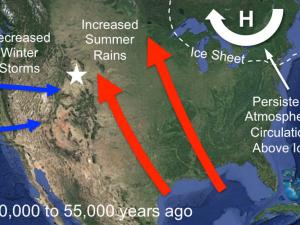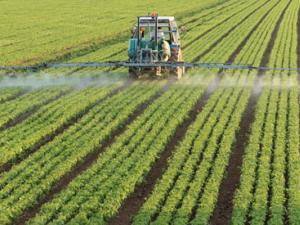

Research Bio
Ronald Amundson is the Betty and Isaac Barshad Endowed Chair in Soils Science and a professor in the Department of Environmental Science, Policy & Management. The people in his laboratory study (1) the processes of ecosystem carbon and nitrogen cycling, (2) environmental and ecological conditions of the past, and (3) ways of developing improved means of dating soils and landscapes, using a combination of stable and radiogenic isotope geochemistry.
He is actively engaged in better understanding the climatic and geological controls on the rates of carbon and nitrogen cycling in soils from around the world and the way in which soils serve as an important control on the chemical composition of the atmosphere. His lab has been using natural levels of 14C in soil organic matter to understand how climate and soil age control natural rates of carbon cycling in soils from a wide spectrum of field settings.
For more than a decade, been examining the way in which the isotopic composition of soils reflects climate and vegetation. Using ratios of stable carbon (13C/12C), nitrogen (15N/14N), and oxygen (18O/16O). They have shown that soil organic matter and calcium carbonate can reflect important characteristics about vegetation and climatic patterns. They, and others, have used these relationships to learn more about past climates using paleosols (soils that have been buried and preserved in sedimentary rock). Our research has extended to include fossil plants, in order to learn more about how physiological processes in plants record information about climatic conditions through variations in isotopic ratios in their tissues. They are also investigating the isotopic composition of modern and fossil animals as a means of determining their diet and environmental conditions.
Current Projects:
The Physics of Soil Organic Carbon Flow and Its Impact on Radiocarbon Content of Soil: The depth patterns of organic C and N in soils (and their isotopes) is driven by the slow downward advective flow of organic matter. Amundson and his students are using large data sets of soil analyses to derive the climatic patterns of both vertical movement and biological decomposition rates with the goal of improving the parameterization of C models in Earth System Models.
The Magnitude and Temperature Controls on the Physical Adsorption of CO2 on Soil Particles: There are several unexplained observations about the CO2 flux from soil to the atmosphere. Probably the most puzzling is the observed process that desert soils become a sink for CO2 at night. Amundson's lab is examinging the thermal controls on CO2 adsorption at landsurface conditions, and have shown that the daily temperature swings in arid regions is large enough to drive significant adsorption or desorption of CO2 abiotically. This process likely has a significant impact on the land-air CO2 exchange when scaled to the global level.
Research Expertise and Interest
soils, environmental science, isotope biogeochemistry, pedology, environmental history & ethics, soilsbiogeochemistry, ecosystems
In the News
America on edge: Berkeley scholars’ early election thoughts
Growth rings on rocks give up North American climate secrets
Scientists have found a new way to tease out signals about Earth’s climatic past from soil deposits on gravel and pebbles, adding an unprecedented level of detail to the existing paleoclimate record and revealing a time in North America’s past when summers were wetter than normal.
Human security at risk as depletion of soil accelerates, scientists warn
Steadily and alarmingly, humans have been depleting Earth’s soil resources faster than the nutrients can be replenished. If this trajectory does not change, soil erosion, combined with the effects of climate change, will present a huge risk to global food security over the next century.



